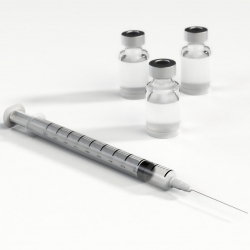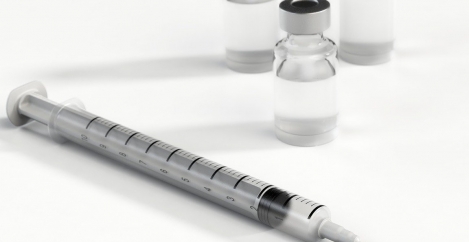January 19, 2021
A workplace divided: Employees split over COVID-19 vaccine
 Perceptyx, the employee survey and people analytics platform, has released new data focused on the role of the COVID vaccine in return to work scenarios. As the world nears 10 months of quarantine and other restrictions, organisations grapple with deciding if and when it will be safe for employees to return to the workplace. As vaccines are rolled out, organisations must tread a fine line with employees as there is a significant divide in perceptions around the vaccine.
Perceptyx, the employee survey and people analytics platform, has released new data focused on the role of the COVID vaccine in return to work scenarios. As the world nears 10 months of quarantine and other restrictions, organisations grapple with deciding if and when it will be safe for employees to return to the workplace. As vaccines are rolled out, organisations must tread a fine line with employees as there is a significant divide in perceptions around the vaccine.
“While there is no doubt COVID-19 vaccines are a welcome advancement in our fight against the pandemic, based on our data, they are neither the sole nor primary factor to employees feeling safe heading back to the office,” said Dr. Brett Wells, Director of People Analytics at Perceptyx.
Over 1,000 U.S. employees were asked to select the top three mitigation efforts that would help them feel safer in the physical workplace. Mask wearing, social distancing, and frequent cleaning topped the list, with employees being required to be vaccinated ranked fourth.
For organisations hoping to get their employees back to the office in the new year, requiring they get vaccinated may not be the best option. Nearly half (47 percent) of those surveyed believe employers should require this of their employees, while 43 percent note they would consider leaving their organisation if the vaccine was a requirement.
Employees are, however, slightly more likely to get vaccinated if their employer encourages them to do so, versus making it a requisite before returning to the office. Whereas 53 percent of employees are likely to get a vaccine if available, 56 percent would get the vaccine if encouraged to do so by their employer. An even higher number – 60 percent – would take it if their employers offered a monetary incentive to do so.
[perfectpullquote align=”right” bordertop=”false” cite=”” link=”” color=”” class=”” size=””]”Those who feel sincerely cared about by their managers are more likely to trust and be persuaded”[/perfectpullquote]
Employees who are most likely to follow through on their organisation’s recommendation to get vaccinated are those who have stronger relationships with their managers, who believe their symptoms would be severe if contracted COVID-19, and those who have already been tested for COVID-19.
“Those who feel sincerely cared about by their managers are more likely to trust and be persuaded by their employer’s encouragement to get vaccinated,” continued Dr. Wells. “This is just one more reason why great leadership and investing in the individual and unique needs of employees is critical to an organisation’s success.”
When asked specifically if they agreed with a number of statements, it is clear that employees have split sentiments about the vaccine.
Key findings:
– 60 percent of respondents are fearful of the potential side effects of the vaccine, however over 67 percent believe the research and development of the vaccine is trustworthy.
– Half (50 percent) say their employers have encouraged them to get the vaccine when available, while 38 percent say their organisations are requiring it in order to return to the physical workplace.
– Just over half (54 percent) would feel safe returning to the office if they were vaccinated, even if others weren’t, while another 64 percent believe there is no safe return to work until all employees are vaccinated.
– Those who are working remotely are more likely to believe there is no safe return without a vaccine – 68 percent versus 58 percent of essential workers who continue to work in the physical workplace.
– Just over half (52 percent) say they would get the vaccine so they wouldn’t have to wear a mask at work, however the CDC still recommends mask wearing even after the two doses of the vaccine.
“There are clearly mixed feelings about the vaccine and when employees will feel safe returning to work, and much of this is based on the individual beliefs and specific situations that vary greatly,” said Dr. Wells. “It is imperative that, given this inconsistency in level of comfort, employers truly understand the needs of their employees and ensure they feel safe and confident before requiring them to return to work.”
Image by Arek Socha













